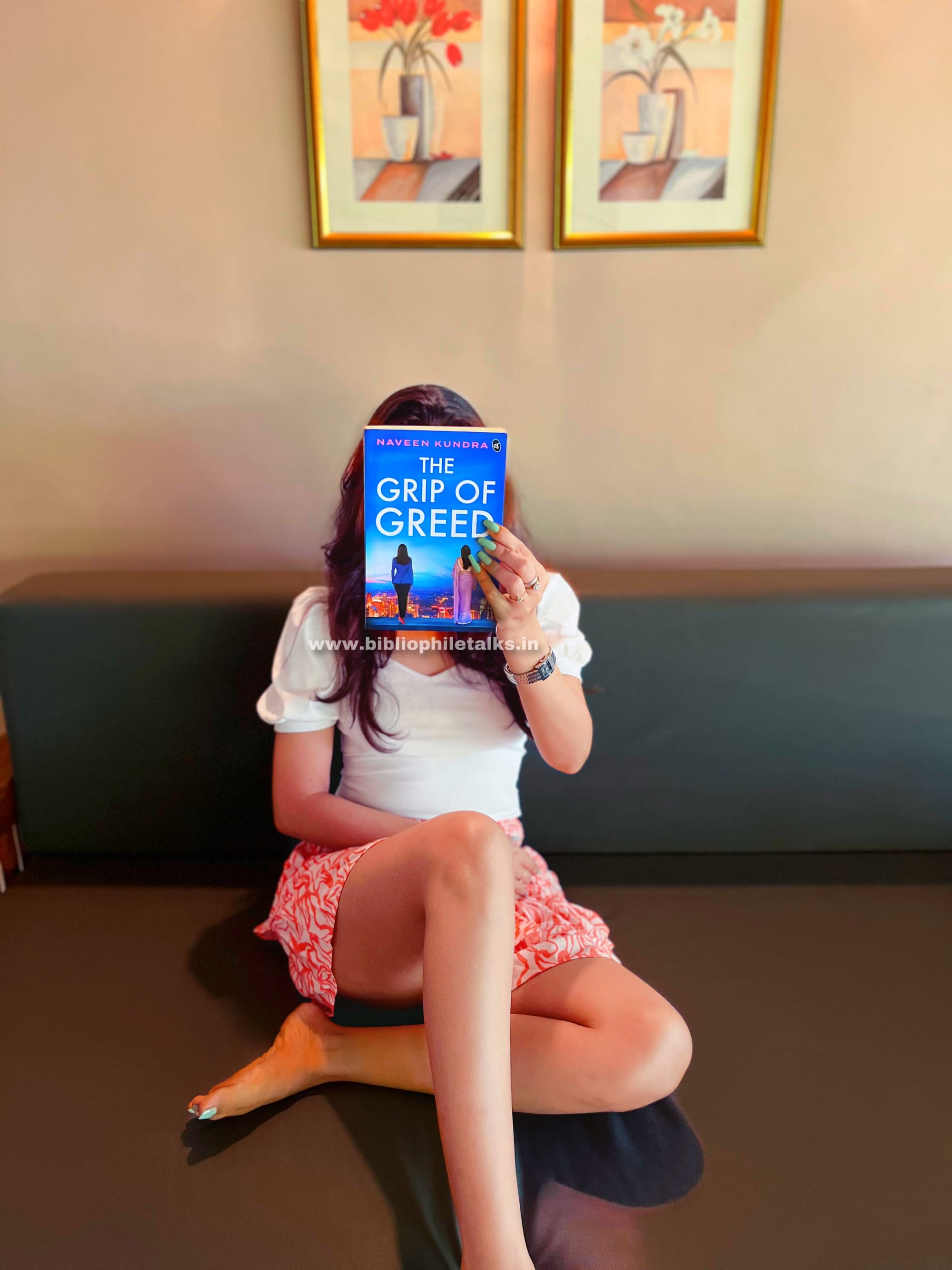THE GRIP OF GREED

𝗧𝗵𝗲 𝗚𝗿𝗶𝗽 𝗢𝗳 𝗚𝗿𝗲𝗲𝗱
𝗕𝘆 𝗡𝗮𝘃𝗲𝗲𝗻 𝗞𝘂𝗻𝗱𝗿𝗮
𝗣𝘂𝗯𝗹𝗶𝘀𝗵𝗲𝗿: 𝗦𝗿𝗶𝘀𝗵𝘁𝗶 𝗣𝘂𝗯𝗹𝗶𝘀𝗵𝗲𝗿
𝗣𝗮𝗽𝗲𝗿𝗯𝗮𝗰𝗸: 𝟐𝟑𝟐
𝗣𝘂𝗯𝗹𝗶𝘀𝗵𝗲𝗱: 𝟔𝐭𝐡 𝗡𝗼𝘃𝗲𝗺𝗯𝗲𝗿 𝟐𝟎𝟐𝟒
𝗚𝗲𝗻𝗿𝗲: 𝗣𝗼𝗹𝗶𝘁𝗶𝗰𝗮𝗹 𝗧𝗵𝗿𝗶𝗹𝗹𝗲𝗿, 𝗦𝘂𝘀𝗽𝗲𝗻𝗰𝗲
𝗜𝗻𝗱𝗶𝗮𝗻 𝗪𝗿𝗶𝘁𝗶𝗻𝗴
𝗥𝗲𝗮𝗱𝗶𝗻𝗴 𝗬𝗲𝗮𝗿: 𝟐𝟎𝟐𝟓
At the heart of this novel lies a compelling power struggle between two formidable women—Tanvi Mehra and Soundarya Kapoor. What elevates their conflict beyond a mere battle for revenge or survival is the highly personal nature of their motivations. Both women are driven by pride, by a sense of what they believe they rightfully deserve, and perhaps even by an unspoken need to prove something to themselves.
Tanvi Mehra rises above shame after being expelled from an exclusive social circle. Rather than retreat, she transforms her pain into a fierce resolve for retribution. Her anger, her vulnerability, and her calculated steps toward revenge are palpable—she’s a character that commands attention.
Soundarya Kapoor, once a woman of stature and influence, now stands at the precipice of ruin. Yet she refuses to bow down. There’s a quiet resilience in her as she clings to what remains of her empire, attempting to shield her secrets and outmanoeuvre the chaos closing in. Her fear is evident, but so is her tenacity.
Moving beyond the characters, the language is easy, and the narration is smooth, making it a suitable read for even newer readers. The pacing is generally brisk, with only occasional dips that slightly slow the narrative. The story unfolds as a gripping commentary on how power, revenge, and unchecked egos can wreak havoc, not just on individuals but on the lives of those around them.
Both Tanvi and Soundarya are deeply flawed—strong-willed, arrogant, and often unlikeable. However, it is precisely these imperfections that have been effectively portrayed, making their clash all the more fascinating. The author smartly situates their battle within the murky world of politics and corruption, offering a portrayal that, though dramatised, resonates with unsettling familiarity. At its core, this is a story about ambition, ego, and the corrosive lure of power. Yet it never feels preachy; instead, it feels authentic.
That said, a few elements impacted my overall experience. The book introduces a considerable number of characters, most of whom are essential to the narrative, yet their sheer volume occasionally overwhelms. Additionally, the presence of multiple subplots diluted the focus from the central storyline, causing the plot to feel somewhat fragmented at times.
Despite this, I would still recommend the book to readers interested in political suspense or fiction, especially those new to the genre. At just around 200 pages, it makes for a sharp, engaging read that offers much to reflect on.
My Rating:
3.5/5
NOTE: In this blog, the CONTENT and PICTURES are owned by Samayra Singh, and cannot be used or distributed without permission. Strict legal action will be taken against any infringement.